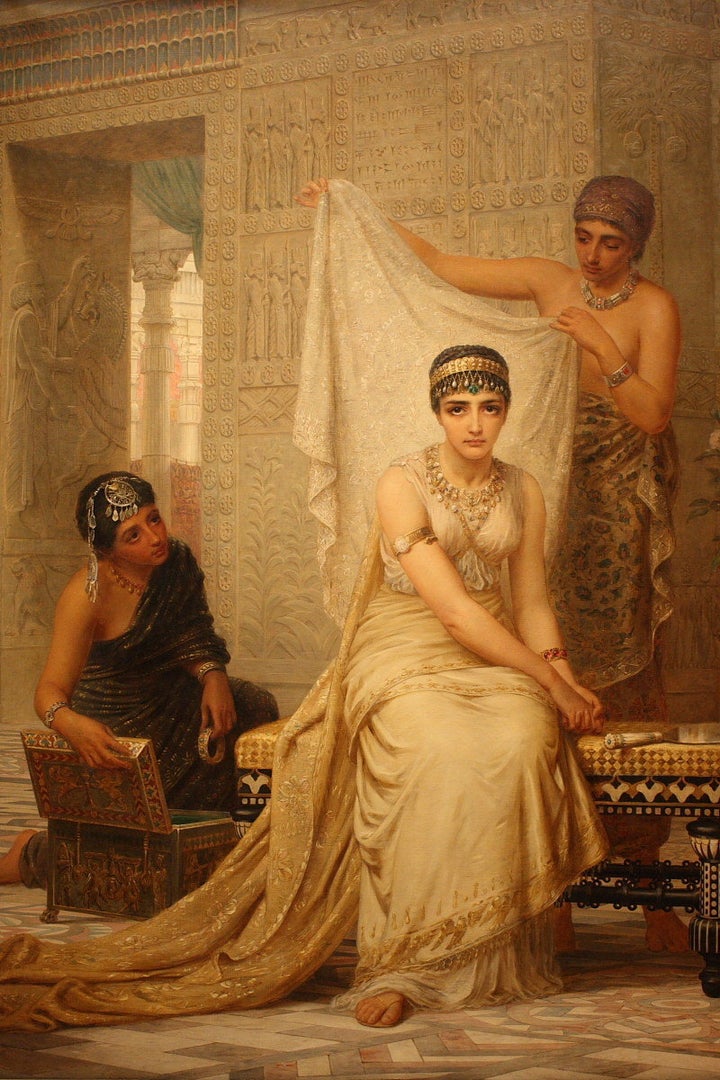
It is a story of palace intrigue and betrayals, bacchanal feasting and a beauty pageant to select a queen, a plot against a king, a plan to annihilate a people and ultimately the salvation of those people.
As told in the biblical Book of Esther, it's the multilayered story of the Jewish holiday of Purim, which will begin at sunset Saturday.
Jewish little girls love to dress up as Esther, the beautiful queen who is credited in the Purim story with saving the Jewish people of Persia. Soon after being chosen as his new wife, Esther bravely confronts King Ahasuerus and his henchman Haman. It's the rare young girl who wants to be Vashti, the queen who preceded Esther and was banished from the kingdom when she refused to appear at Ahasuerus' banquet. Vashti, we were often told, was wicked and vain. But was she?
As adults, though, Purim presents us with an opportunity to apply to modern-day situations the ancient texts we are rereading, as Jewish children are dressing up in costumes and sounding the grogger noisemaker. Those texts provide the perfect jumping-off place for contemporary conversations about healthy relationships.
Among the keys for a healthy relationship are developing a strong voice, which includes a positive self-identity and an identification with something larger than ourselves -- a community or cause; presenting ourselves in a manner that shows confidence; and striving for parity in which we balance the power of each partner in a couple relationship.
We can view Esther as doing just that. First, at the urging of her cousin (and foster father) Mordechai, she realizes that her voice can save the Jewish people -- her people -- whose lives have been threatened by the evil Haman. That awareness gives her the strength to approach the king, even knowing that to do so puts her own life at risk.
Next, she requests a meeting with Ahasuerus, preparing for it by ensuring that she looks her best -- that she is dressed for success. Is her fasting, anointing herself and dressing in her finest any different from modern-day men and women putting on the outfits in which they feel most confident for important meetings or job interviews?
Finally, Esther strives for parity, by ensuring that the king would hear her and consider her request, and would understand that his decision would deeply and irrevocably affect their own relationship. "Let my life be granted me as my wish, and my people as my request. For we have been sold, my people and I, to be destroyed, massacred and exterminated." Is that any different from a woman standing up for herself, her family or her beliefs?
Ahasuerus grants Esther her wish and the Jewish people are saved. In turn, Haman is punished.
Let's imagine what this means not only for the Jews, but also for the relationship between Ahaseurus and Esther. Look ahead seven years and envision that marriage. Esther knows that she can approach her husband not only on his terms, but on hers as well. She knows she will be taken seriously, rather than considered an object for his sexual gratification that can be threatened or discarded when she no longer pleases him. Now, they respect each other, valuing what each bring to the relationship.
To put this in even broader context, let's look ahead a decade and envision what that marriage has meant for the kingdom. We can imagine that thanks to Esther's strong relationship with her husband, women are spared the indignity of palace harems and have more balanced relationships with their husbands.
Esther teaches us about putting aside fears, speaking up and presenting ourselves with confidence. Critics may complain that Esther uses her sexuality to find favor with the king, but we mustn't forget that at the time, her sexuality was the only power at her disposal. She parlayed it for good, using it both to help her people and to foster parity in her relationship.
Turning to Vashti, on the other hand, some see a difficult woman who doesn't follow orders or even a woman accustomed to abuse by her husband, so downtrodden she doesn't speak up for herself, but only deigns to provide a response to his summons. Looked at through another light, however, we can choose to see a strong woman who has found her voice. She bravely refuses to heed the king's command when he beckons her to his banquet -- likely a sexual orgy -- so he can show her off to his friends who have been eating and drinking to excess. She stands up for herself and has the dignity to defy the king. While we don't know what happened to Vashti, let's imagine her several years later, far outside the kingdom, living a new life in which she speaks her mind, has self-confidence and knows that healthy relationships involve mutual respect.
When it comes to the Bible, it's easy to fall back on standard interpretations year after year, but when we examine a multifaceted story such as Esther's through a modern lens, we see the many ways the story resonates in contemporary life. Even a book as ancient as the Bible can teach us a thing or two about the value each member of a couple add to relationship.
Dress as Esther or dress as Vashti this Purim, but dress as the woman you want to be. Empower yourself. Speak up for yourself. And have a hamentashen.